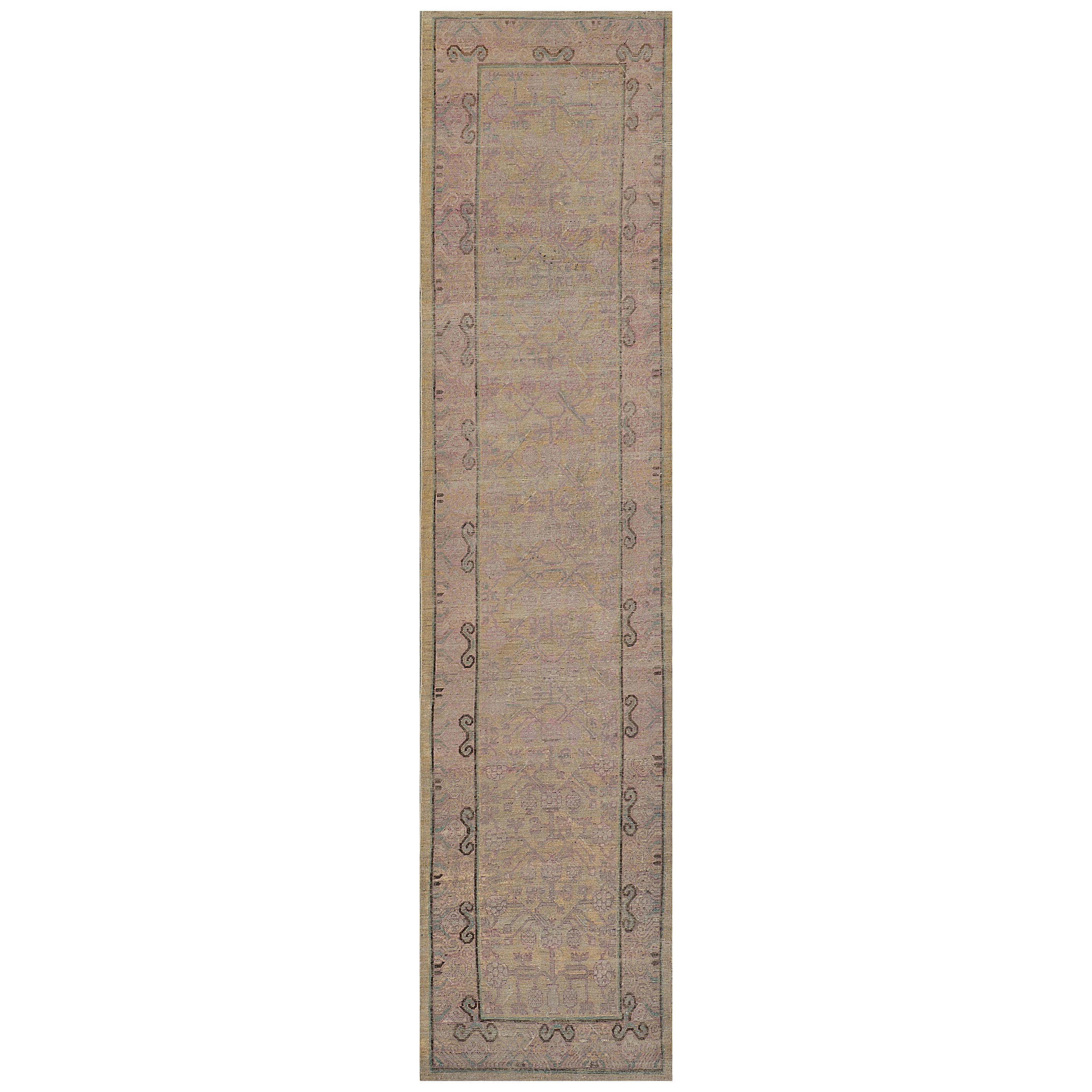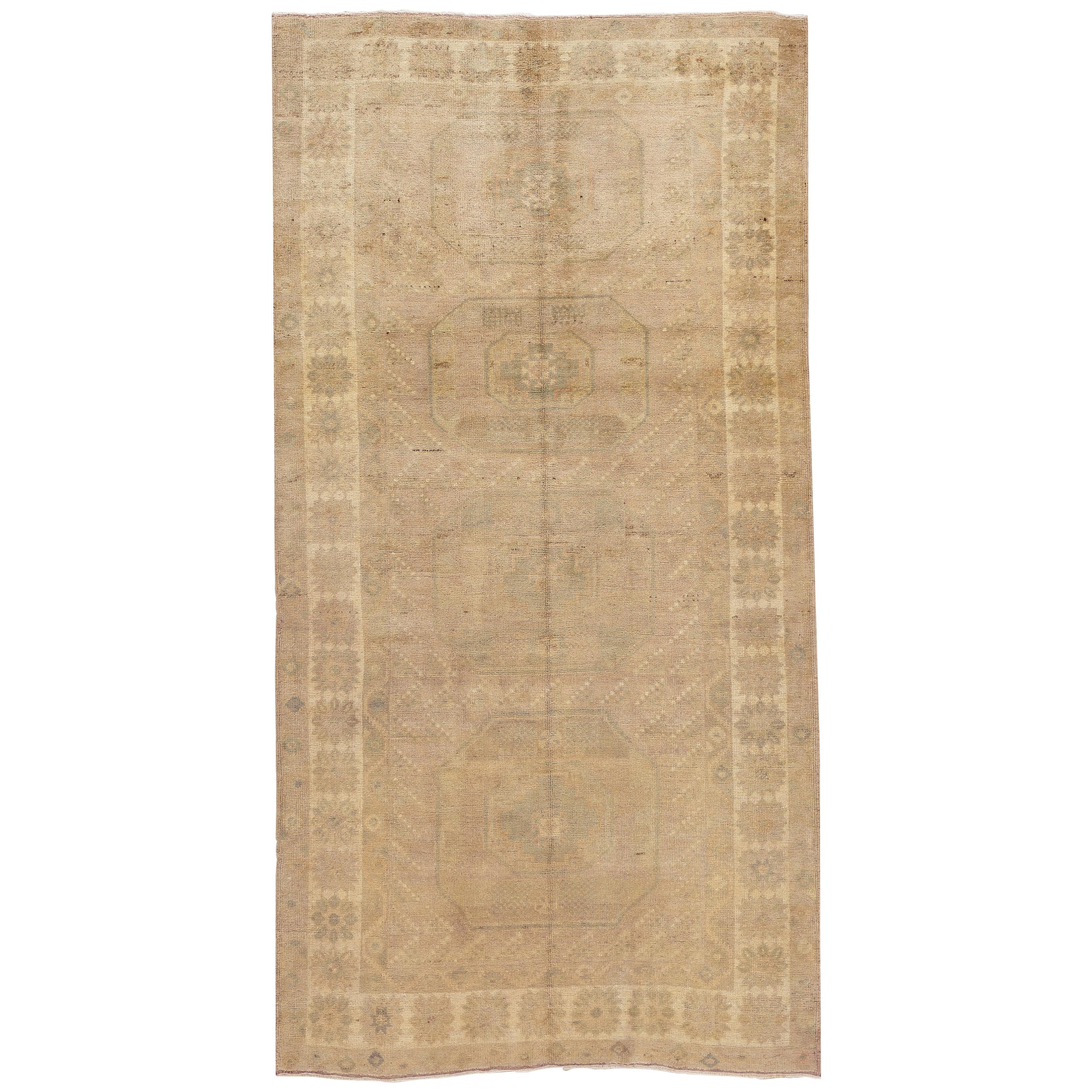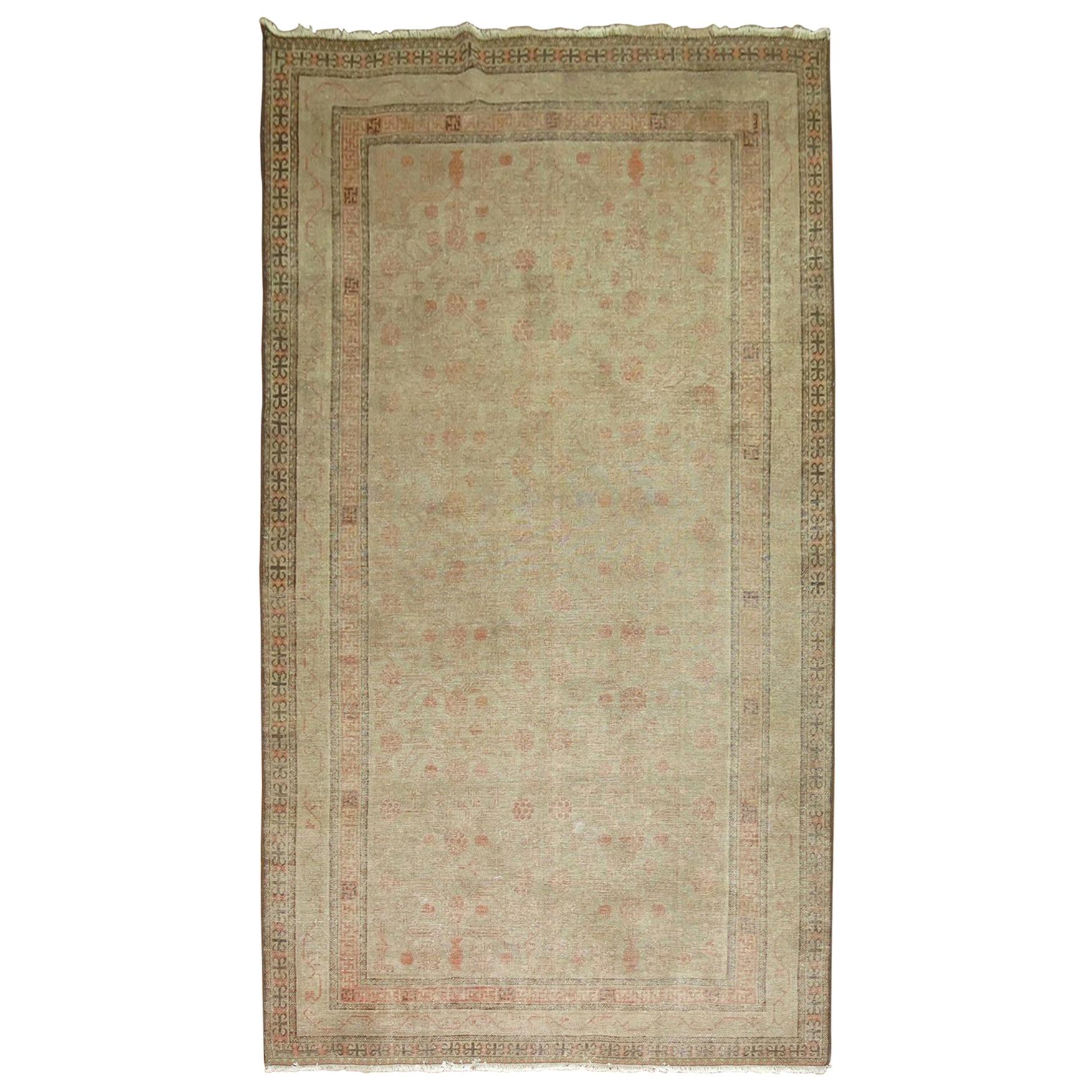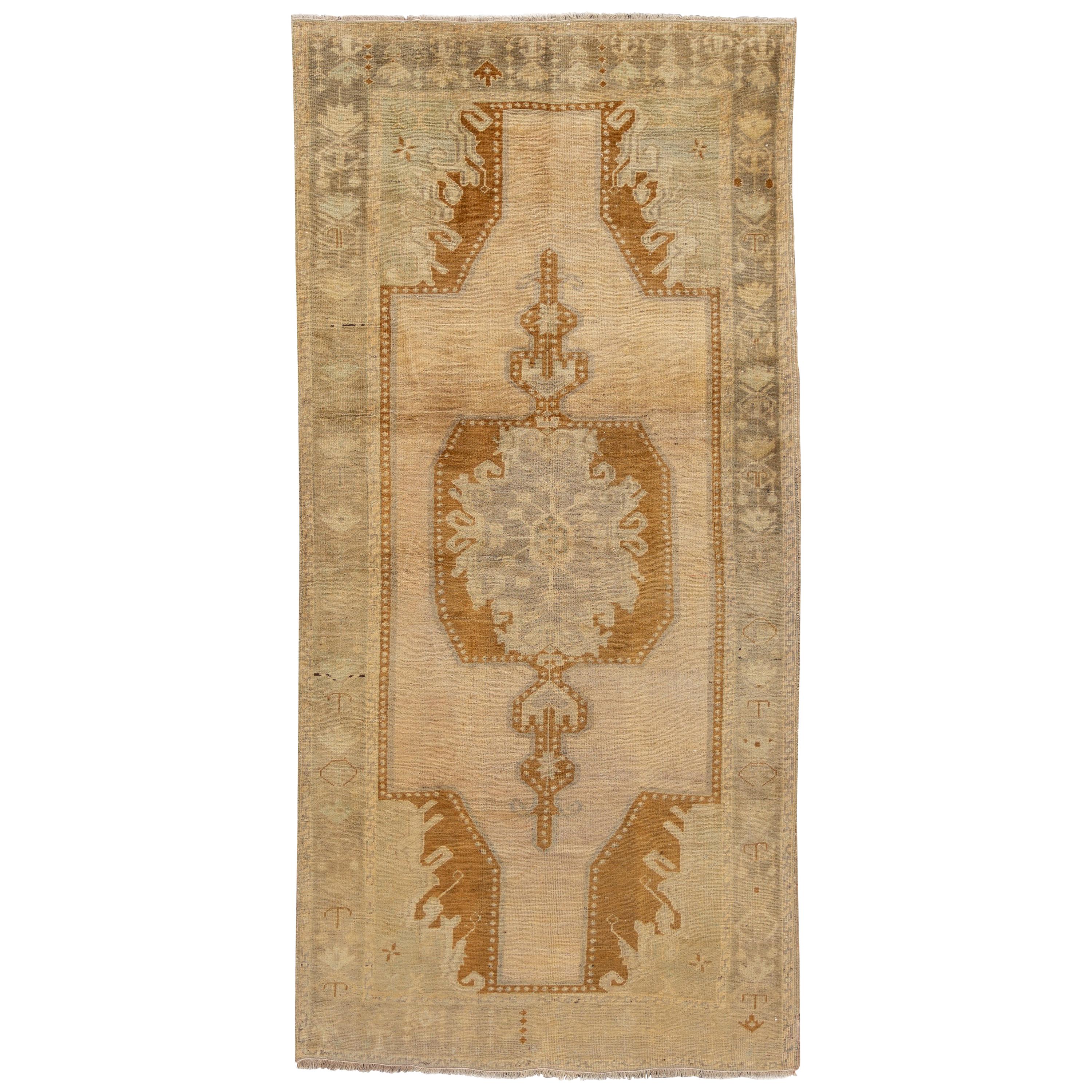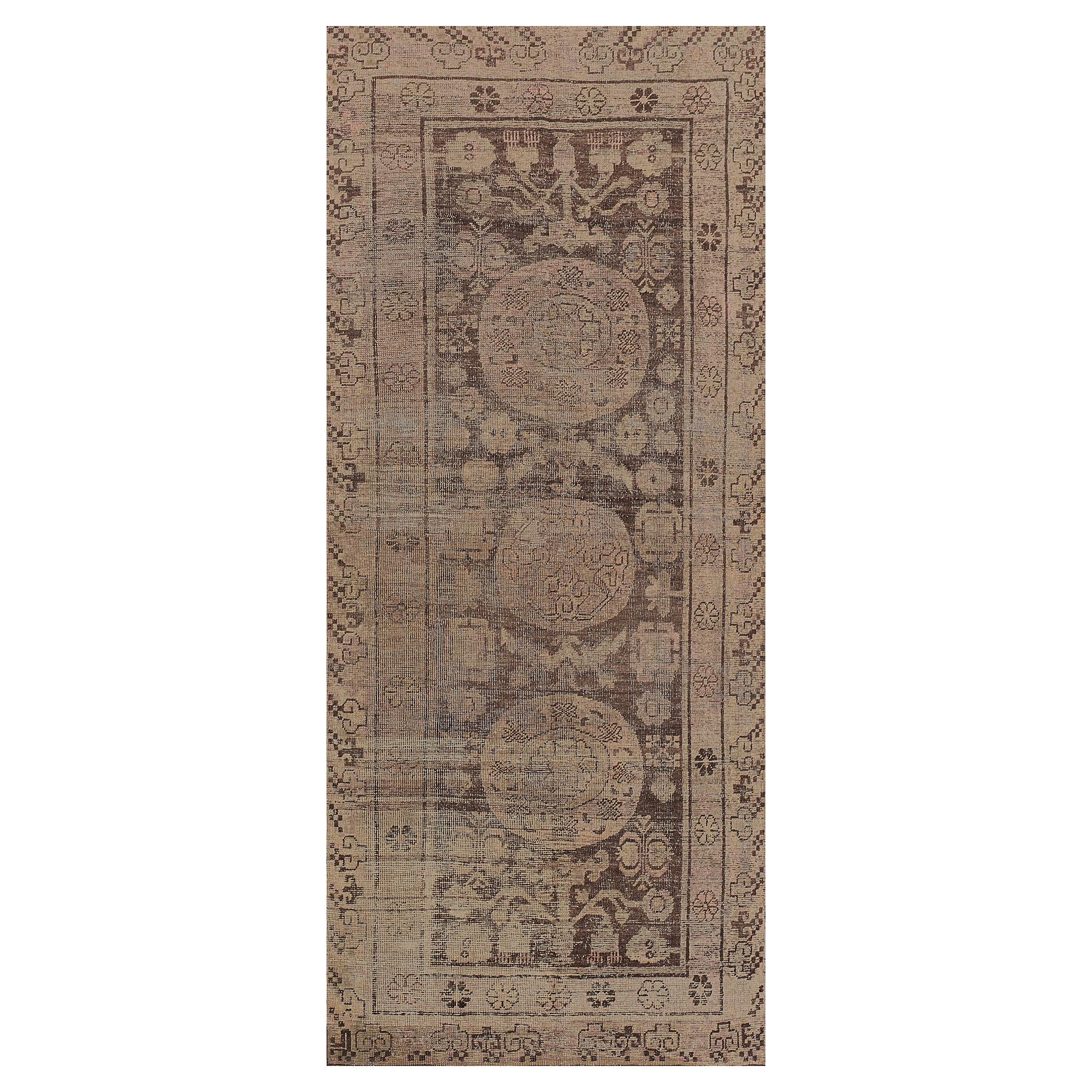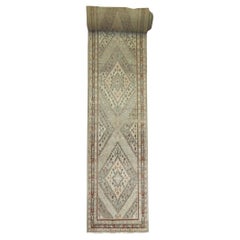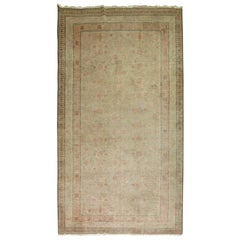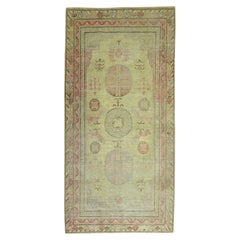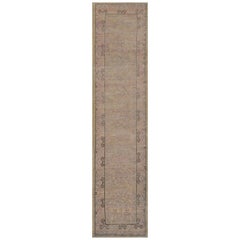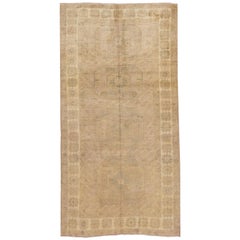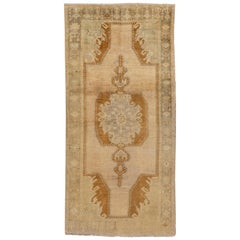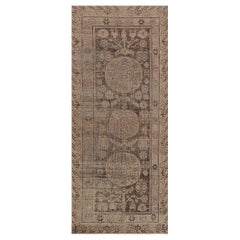Items Similar to Rare Shabby Chic Late 19th Century Wool Narrow Khotan Runner
Want more images or videos?
Request additional images or videos from the seller
1 of 11
Rare Shabby Chic Late 19th Century Wool Narrow Khotan Runner
$3,200
£2,429.39
€2,778.70
CA$4,470.86
A$4,972.58
CHF 2,596.53
MX$60,510.97
NOK 33,161.59
SEK 31,099.72
DKK 20,738.49
Shipping
Retrieving quote...The 1stDibs Promise:
Authenticity Guarantee,
Money-Back Guarantee,
24-Hour Cancellation
About the Item
Late 19th century rare narrow size Khotan runner with faded weather textured appeal geometric design.
Measures: 2'3" x 7'3".
- Dimensions:Width: 27 in (68.58 cm)Length: 87 in (220.98 cm)
- Style:Mid-Century Modern (In the Style Of)
- Materials and Techniques:
- Place of Origin:
- Period:
- Date of Manufacture:circa 1880
- Condition:Wear consistent with age and use. even flat pile. can handle every day traffic if needed.
- Seller Location:New York, NY
- Reference Number:Seller: r4465 J & D Oriental Rug Co.1stDibs: LU90875756583
About the Seller
5.0
Platinum Seller
Premium sellers with a 4.7+ rating and 24-hour response times
Established in 1975
1stDibs seller since 2011
1,550 sales on 1stDibs
Typical response time: <1 hour
- ShippingRetrieving quote...Shipping from: New York, NY
- Return Policy
Authenticity Guarantee
In the unlikely event there’s an issue with an item’s authenticity, contact us within 1 year for a full refund. DetailsMoney-Back Guarantee
If your item is not as described, is damaged in transit, or does not arrive, contact us within 7 days for a full refund. Details24-Hour Cancellation
You have a 24-hour grace period in which to reconsider your purchase, with no questions asked.Vetted Professional Sellers
Our world-class sellers must adhere to strict standards for service and quality, maintaining the integrity of our listings.Price-Match Guarantee
If you find that a seller listed the same item for a lower price elsewhere, we’ll match it.Trusted Global Delivery
Our best-in-class carrier network provides specialized shipping options worldwide, including custom delivery.More From This Seller
View AllRare Long Antique Khotan Runner
Located in New York, NY
One of our most interesting finds to date. This is a 33 foot Khotan runner with repeating diamond motifs in earth-tone hues surrounded by thin multi-band borders with several beautif...
Category
20th Century East Turkestani Anglo-Indian Chinese and East Asian Rugs
Materials
Wool
Shabby Chic Gray Khotan Gallery Size Wool Late 19th Century Carpet
Located in New York, NY
Faded Distressed Khotan rug in a gallery format,
circa late 19th century, measures: 6'3" x 12'6"
Khotan rugs were produced in Eastern Turke...
Category
Antique Late 19th Century East Turkestani Rustic Central Asian Rugs
Materials
Wool
Worn Antique Khotan Area Size Rug
Located in New York, NY
An early 20th century antique Khotan rug
4'1'' x 6'10''
Category
Vintage 1910s East Turkestani Anglo-Japanese Chinese and East Asian Rugs
Materials
Wool
Zabihi Collection Late 19th Century Mustard Antique Khotan Rug
Located in New York, NY
Accent size mustard field gkhotan rug from the late 19th century.
Measures: 5' x 9'3''
Producing rugs since the 17th century with peak production in the 18th and 19th centuries...
Category
Antique 1890s East Turkestani Anglo-Japanese Central Asian Rugs
Materials
Wool
Distressed Shabby Chic Antique Khotan Samarkand Rug
Located in New York, NY
Antique shabby chic Khotan rug gallery size rug with faded grays, pinks, lavenders.
4'11'' x 10'3''
Category
20th Century East Turkestani Khotan Chinese and East Asian Rugs
Materials
Wool
Antique Khotan Runner
Located in New York, NY
Late 19th century worn East Turkestan Khotan Runner with a pomegranate design in gray, mustard, beige and denim blue
Measures: 2'6'' x 14'.
Category
Antique Late 19th Century Khotan Central Asian Rugs
Materials
Wool
You May Also Like
Vintage Mid-Century Hand-woven Wool Khotan Runner
Located in West Hollywood, CA
This vintage, circa 1950, Khotan runner has a sandy-yellow field with an overall design of aubergine-purple angular pomegranate vine, in a broad sandy-yellow cloud-motif and dense po...
Category
Mid-20th Century East Turkestani Khotan Chinese and East Asian Rugs
Materials
Wool
Vintage Mid-20th Century Khotan Rug
Located in Norwalk, CT
This is a mid-20th century hand knotted Khotan rug with a beige color and all-over design. The rug measures: 4'9" x 9'2".
Category
Mid-20th Century East Turkestani Khotan Chinese and East Asian Rugs
Materials
Wool
Vintage Mid-20th Century Khotan Rug
Located in Norwalk, CT
This is a mid-20th century hand knotted Khotan rug with a beige color and medallion geometric design. The rug measures 4'6" x 8'11".
Category
Mid-20th Century East Turkestani Khotan Chinese and East Asian Rugs
Materials
Wool
Hand-knotted Late 19th Century Wool Khotan Runner
Located in West Hollywood, CA
This antique, circa 1880, Khotan rug has a chocolate-brown field with a column of three sandy-yellow roundels containing a central lozenge surrounded by a band of floral motifs and a...
Category
Antique Late 19th Century East Turkestani Khotan Chinese and East Asian ...
Materials
Wool
Beautiful Vintage Khotan Runner
Located in Saint Ouen, FR
Nice late 20th century Chinese Khotan rug with beautiful design blue field color with yellow, pink and orange. Entirely hand knotted with wool velvet on cotton foundation.
Category
Late 20th Century Chinese Khotan Chinese and East Asian Rugs
Materials
Wool
Vintage Distressed Fragment Malayer Rug Runner
Located in Katonah, NY
Allover repeating oversized boteh design motif in staggered rows, each in alternating direction bearing individual germinating flowers. Colors and shades include: Deep copper red, iv...
Category
Vintage 1930s Persian Malayer Persian Rugs
Materials
Wool, Cotton
More Ways To Browse
Danish Round Dining
Marble Slab Table
White Swivel
1949 Dining Room Set
Outdoor Furniture Gold
Powder Coated Outdoor Furniture
Relief Plates
Square Cross
Cabriole French Leg Table
Cotton Dhurrie Rugs
Mid Century Leather And Metal Chair
Nj Woods
Antique Storage Box
Glass Horse
Sheffield England Silver
Teak Art Deco
Bathroom Vanities
Belle Epoque Art
